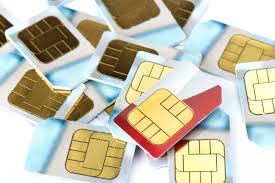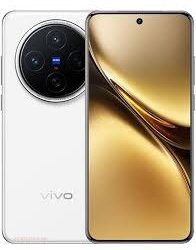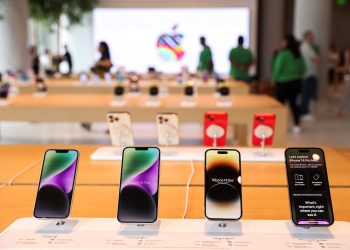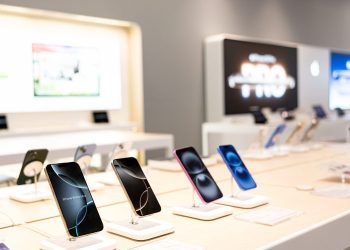Today, Apple held their much-anticipated special launch event, called “California Streaming.” The iPhone 13 range and the Apple Watch Series 7, as well as new iPads and Macs, were expected to be unveiled by the tech powerhouse. The iPhone 13 series included a 5.4-inch iPhone 13 Mini, 6.1-inch iPhone 13, 6.1-inch iPhone 13 Pro, and 6.7-inch iPhone 13 Pro Max, similar to the iPhone 12 family of phones. Apple also introduced the Watch Series 7 with a smaller “S7” processor, which may allow for more space for a larger battery or other parts. The presentation was aired live on Apple’s official YouTube channel as well as on Apple’s website.
iPhone 13, Mini, Pro, and Pro Max
Apple unveiled a whole new line of iPhones. They are all upgraded to the new A15 Bionic processor, which has a six-core CPU with two high-performance cores, four high-efficiency cores, and a quad-core GPU.
Bigger apertures and additional video capabilities have been added to all of the rear cameras. The most anticipated feature is Cinematic mode, which will enable phones to have professional-level “rack focus,” allowing you to seamlessly switch between focal objects in a movie. You may also pick where to focus by pressing or holding down on the screen to fix focus on an object.
The camera now features a macro lens, allowing it to photograph a subject from as close as an inch away. Apple also claims that it has improved the software that identifies people’s skin tones, and that you can now add tone and warmth filters that the camera remembers.
Despite the speedier CPU, 5G, better cameras, and other improvements, Apple claims that the iPhone 13 has a longer battery life than its previous models. One way it accomplishes this is by switching to LTE “when 5G speeds aren’t required.”

Apple is also making its devices less reliant on the internet. Many Siri commands, for instance, will remain on the iPhone, a first in the ten years since the voice assistant was released.
The iPhone 13 Pro includes longer battery life and a new Super Retina XDR panel with 1,000 nits of peak ambient brightness, which is 25% brighter than the previous model. It can also alter the frame rate on the fly, boosting it to 120Hz when you need to match games and movies, but dropping it to 10Hz when you don’t.
Prices remain unchanged from the previous version. The iPhone 13 is available for $799 (£779, AU$1,349). The iPhone 13 Mini starts at $699 (£679, AU$1,199) with double the storage, 128GB. You may also buy a 512GB variant, which was previously only available on Pro models. The iPhone 13 Pro will continue to cost $999 (£949, AU$1,699), while the iPhone 13 Pro Max will cost $1,099 (£1,049, AU$1,849). Preorders begin on Friday, September 17, and the phone will be available in shops on September 24.
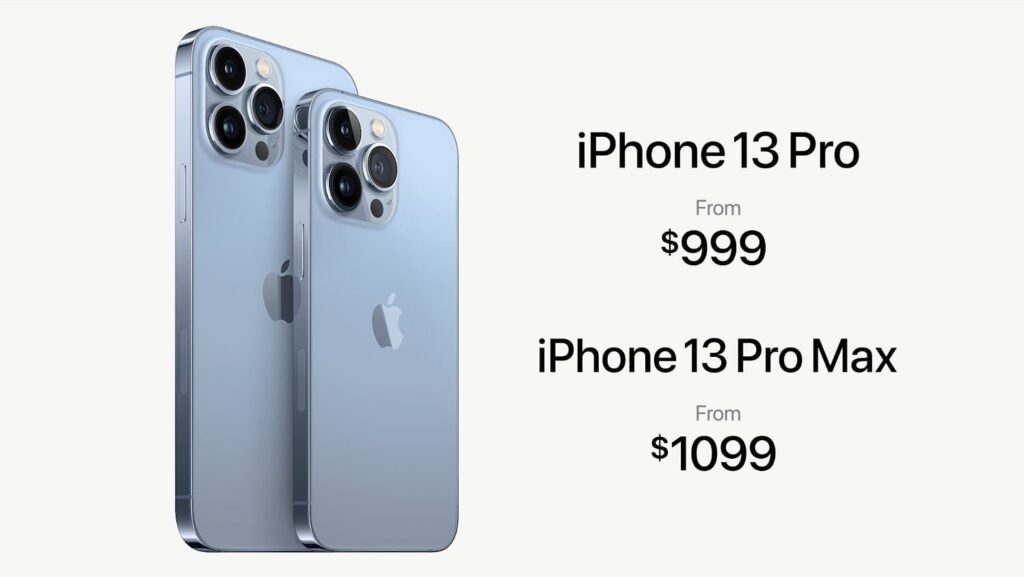
Apple Watch Series 7
The new watch features a bigger display, with 20% more screen space than the Series 6 and 50% more than the Series 3. According to Apple, the proportions of the watch have scarcely altered. It also features “softer, more rounded edges” and “wraparound” sides.
Apple claims that has revamped software buttons to make them easier to tap and that it can accommodate 50% more text on the screen than last year’s watch.
It now comes in a variety of different colors, bands, and even a quick charger. Apple claims that it is made of 100 percent recyclable aluminum, much like the iPad.
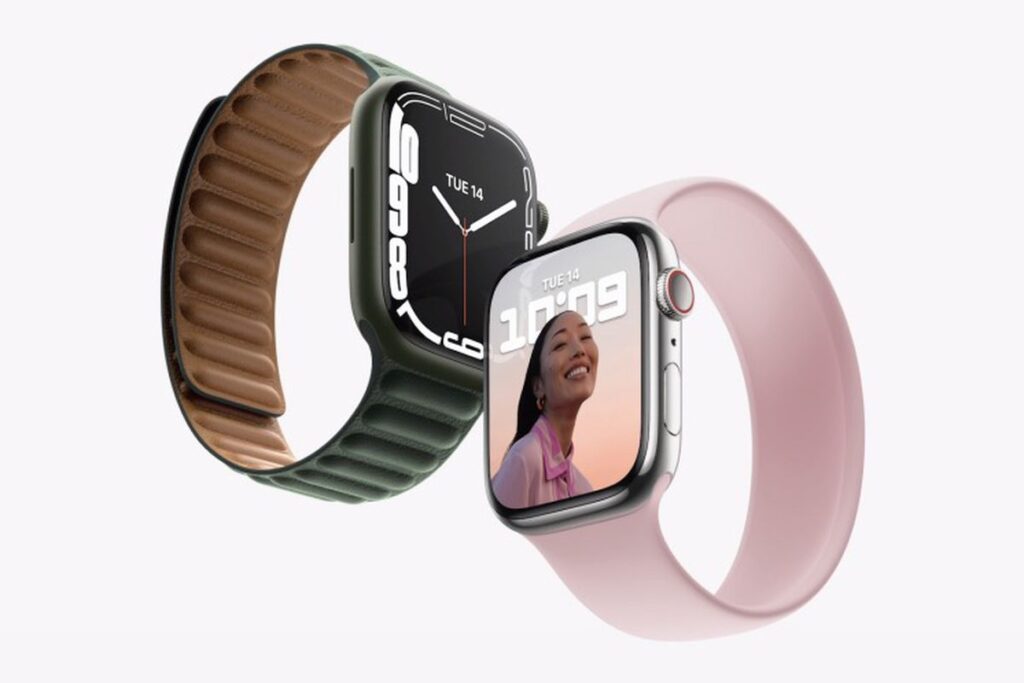
The pricing of the Apple Watch Series 7 will be $399, with foreign rates to be disclosed later. However, it will not be available until later this autumn. Apple will also continue to offer the Apple Watch Series 3 for $199 and the Apple Watch SE for $279.
Since its unveiling last year, Apple’s $10-per-month Fitness Plus program has been focused on encouraging you to sweat. This year, however, it will feature a meditation option, which will contain a variety of various serenity, compassion, and thankfulness meditations. It will be updated weekly on your phone and watch, much like Apple’s other classes.
Apple’s motion and exercise app has long featured hidden capabilities to compete with pals, and now the firm is introducing group workouts as well. You may start a workout with (or against) your pals from an iMessage chat discussion in this scenario. According to Apple, up to 32 individuals may participate, and you’ll even be notified if pals are ahead of you in a cycling lesson, for instance.
iPad and iPad Mini
According to Apple, the new 10.2-inch iPad features the A13 Bionic technology, which is 20% quicker than the A12 “in every element of the chip from the CPU and GPU to the neural engine.” (The updated A15 Bionic processor is included in the iPhone 13.).
However, the Mini is the more significant change.

It does away with the home button and has reduced screen bezels to accommodate the bigger 8.3-inch True Tone screen with an anti-reflective coating and a brightness of 500 nits. It is also available in a variety of hues, including purple, pink, “starlight” (a light grey), and space grey.
It also features Touch ID integrated into the power button, like did the iPad Air last year.
According to Apple, the iPad Mini update means that all of the company’s iPads are now constructed of 100 percent recycled aluminum and tin (for the solder). Apple claims that the enclosure magnets are made entirely of recycled rare earth materials (though not everywhere).
The iPad has always been a portrait-oriented device. When held vertically, the front-facing camera has always been at the top of the smartphone, while the speakers have always been at the bottom. With the iPad Mini, Apple relocated the selfie camera to the top of the landscape position and added stereo speakers that can also be heard in landscape mode.
Apple brought 5G super-fast connectivity to the iPhone last year. This year, it will include the technology in all of its iPads, beginning with the iPad Pro in April. The iPad Mini now has 5G connectivity, which Apple claims can deliver 3.5 gigabits per second. It also has a USB, much like its iPad Pro brothers.

The iPad costs $329 (£319, AU$499), while the iPad Mini costs $499 (£479, AU$749).
And with that, Apple concludes with another tour of California landmarks. It includes production health and safety information, such as daily health exams and facial covers “worn by everyone,” as in prior videos.
So, when are you going to be able to purchase it?
The iPhone 13 Pro will remain at $999, while the iPhone 13 Pro Max will start at $1,099.
Preorders begin on September 17 and will ship on September 24.
Some Highlights:
iPhone 13 Pro as a video camera
Apple made it a priority for the iPhone 13 Pro to be used as a professional-level video camera. It hired Academy Award winner Kathryn Bigelow to test it out, demonstrating how well it handles low-light pictures.
iPhone 13 Pro camera upgrades
According to Apple, the upgrades to its wide and ultrawide lenses improve low-light performance and enable macro photography (shooting a subject as near as 2 cm away).
Apple also claims that it has improved the software that identifies people’s skin tones, and that you can now add tone and warmth filters that the camera remembers.
iPhone 13 Pro and Pro Max: Desing and color
Apple claims it has the “most professional design,” which is arguably the most Apple-like thing I’ve heard the firm say in a long time.
It is available in four different colors: silver, graphite, gold, and “sierra blue.”
According to Apple, the iPhone 13 Pro features a larger battery. It also has a better GPU than the iPhone 13.
Apple announced a new “Super Retina XDR display” with 1000 nits of peak outdoor brightness, which is 25% brighter than last year. It can also alter the frame rate on the fly, raising it to 120Hz when necessary but decreasing it when not. Apple demonstrated it dropping down to 10Hz in its demo.
Better battery life
Despite the speedier CPU, 5G, better cameras, and other improvements, Apple claims that the iPhone 13 has a longer battery life than its predecessor. One way it achieves this is by switching to LTE “when 5G speeds aren’t required,” according to Apple. Apple’s A15 Bionic processor is also more efficient, according to the firm.
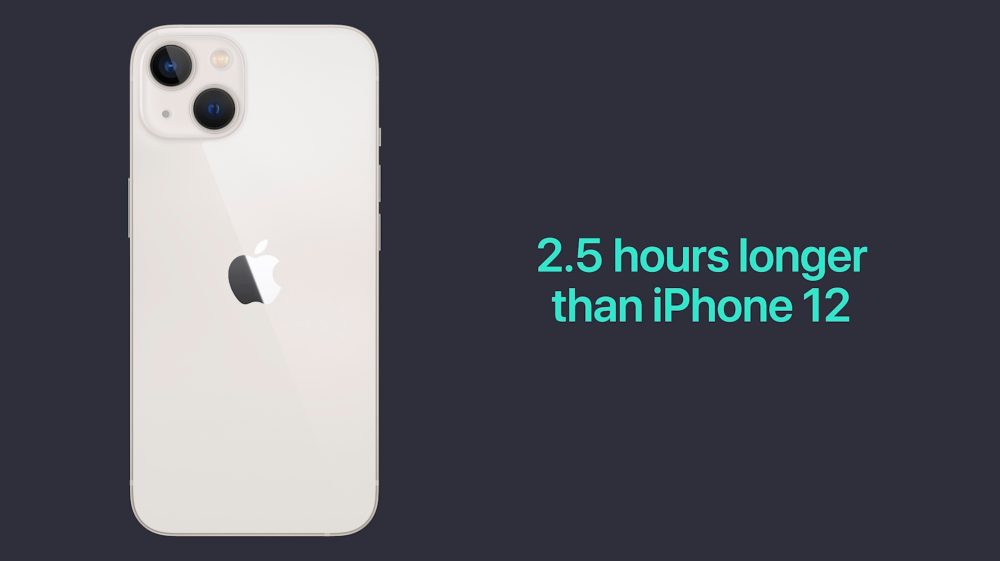
Apple is also making its devices less reliant on the internet. Many Siri commands, for example, will remain on the iPhone, a first in the ten years since the voice assistant was released.
Apple has stated that it will maintain the same prices this year. The iPhone 13 Mini starts at $699 and has a starting capacity of 128GB. (A 512GB version is now available, which was previously only accessible on Pro devices.)
A new automatic focus
According to Apple, Cinematic Mode follows the subject of a video’s gaze, shifting focus when they look away and again when they glance back.
According to Apple, you can also pick where to focus by touching the screen or even holding down to lock focus on a subject. Apple claims that everything was filmed in Dolby Vision HDR, which is a fancy term for high-end video standards.
Camera upgrades and Cinematic Mode
Apple claims that the iPhone 13’s rear cameras have received significant improvements. Apple claims that the 12-megapixel camera’s F1.6 aperture allows it to capture 47 percent more light.
The aperture of the ultrawide camera is F 2.4.
When it comes to video, Apple claims it’s introducing “cinematic mode,” which will allow phones to have professional-level “rack focus,” which allows you to seamlessly switch between focal objects in a movie. Apple, of course, developed a demo “movie” to demonstrate it.
iPhones get new A15 Bionic chip
“To be honest, the competition is still catching up to our processors,” Apple claims. This year, the iPhone 13 receives the A15 Bionic processor.
It boasts a 6-core CPU that includes two high-performance cores and four high-efficiency cores. Apple claims it is up to 50% quicker than the competitors. According to Apple, it also features a 4-core GPU. It boasts visuals that are 30% quicker than the competitors.
It ended with…
Apple winded up, which implies that any Mac announcements will have to wait until a later event. Interestingly, the anticipated AirPods 3 are also mia.
While we’re on the subject of unannounced items, Apple’s presentation came and went with no mention of upcoming releases for iOS 15, iPadOS 15, or watchOS 8. If we had to estimate, the update would be released before the phones hit shelves on September 24, so we’d say early next week.

